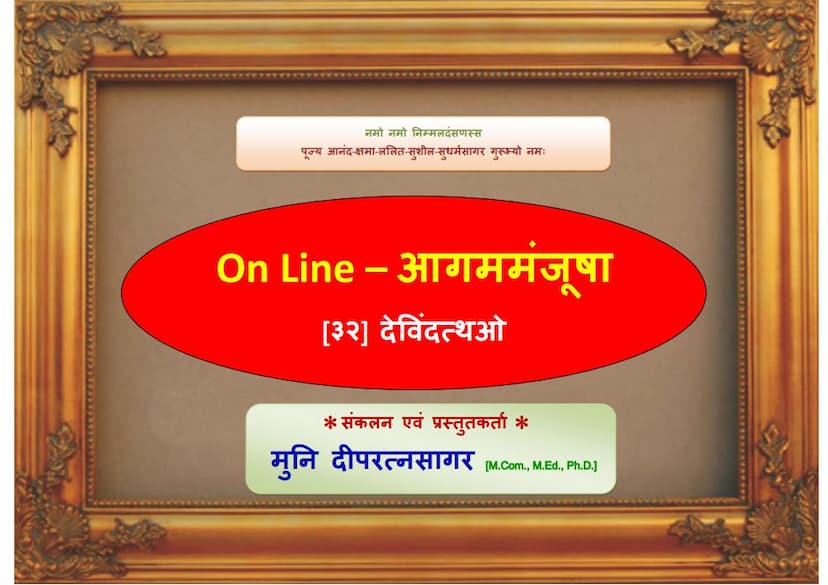Aagam Manjusha 32 Painnagsuttam Mool 09 Devindtthav
Added to library: September 1, 2025

Summary
This document is a Jain text titled "Aagam Manjusha 32 Painnagsuttam Mool 09 Devindtthav" (32nd book in Aagam Manjusha series, Painnagsuttam Mool 09, Devindtthav). The authors are Anandsagarsuri and Sagaranandsuri, and the publisher is Deepratnasagar.
The document provides an introduction to an online version of the "Aagam Manjusha," which was originally compiled by Acharya Shri Anand Sagarji M.S.A. about 70 years prior to the online publication date (2012). The online version aims to make these Jain scriptures accessible digitally.
The core of the document is the "Devendratthav", which appears to be a hymn or discourse praising the thirty-two "Devindas" (celestial beings or lords). The text meticulously details:
- Identification of the Thirty-Two Devindas: The text lists various celestial beings, often in pairs, who are considered important in Jain cosmology. These include Bhavanavasi (Dwelling-dwellers) like Chamara, Vairochana, Nagakumara, and others.
- Description of their Realms and Residences: It elaborates on the number of their heavenly mansions and palaces, their dimensions, and their locations within the Jambudvipa and other continents.
- Longevity and Status: The text mentions the lifespan (sthiti) of these celestial beings, often in terms of Sagaropama (ocean-like periods).
- Cosmic Geography: It describes various continents (Dwipa), oceans, and celestial realms, indicating where different types of celestial beings reside.
- Celestial Chariots and Vehicles: The text mentions the celestial chariots (vimana) and their construction.
- Jotishya (Astrology/Astronomy): A significant portion of the text is dedicated to the celestial bodies like the Sun (Surya), Moon (Chandra), stars (Tara), planets (Graha), and constellations (Nakshatra). It details their movements, relative positions, diameters, orbits, and lifespans.
- Levels of Celestial Beings: It categorizes celestial beings into different classes like Bhavanavasi, Vanavyantara (Forest-dwellers), and Jyotishya (celestial beings associated with stars and planets). It also mentions the Kalpavasi (heavenly beings who reside in celestial mansions) and their hierarchy.
- Details of Kalpavasi and their Mansions: It describes the different Kalpas (heavenly abodes) and the number of celestial mansions within each, along with the lifespan of the deities residing there.
- Anuttara Vimana: The text also touches upon the Anuttara Vimana, the highest celestial abodes, where beings attain ultimate bliss.
- The Nature of Siddhas: The latter part of the text shifts to describing the Siddhas (liberated souls). It discusses their form, abode (in the Siddhashila), their unchanging nature, and the boundless bliss they experience. It emphasizes that the bliss of Siddhas is unparalleled and far superior to that of any celestial being or human.
- Worship and Devotion: The text highlights the worship and reverence shown by celestial beings towards the liberated souls (Siddhas) and the omniscient beings (Arhats).
In essence, the "Devendratthav" is a detailed cosmological and theological discourse within Jainism, providing a comprehensive understanding of the various celestial realms, their inhabitants, their characteristics, and ultimately, the state of liberation. The online presentation aims to preserve and disseminate this knowledge.